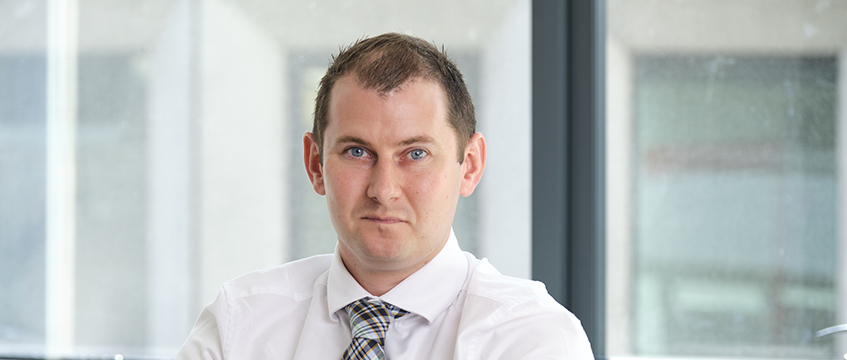Despite the ongoing sophistication of their amenities, the sun remains very much the holy grail for holiday park operators. But has the sector been guilty of flying too close to it?
Lockdown provided the first opportunity in almost 60 years for UK holiday parks to operate without the competition of their mortal enemy, the accessible overseas holiday package. And, while booking levels swelled through the roof, operators gambled on capacity remaining at those levels, meaning development and investment went in and transaction values swelled accordingly. Some now ask whether that is sustainable.
One man who is sanguine on the subject is Jamie Keith, head of holiday and residential parks at Christie & Co, and one of only a handful of people who regularly specialise in these sectors alone.
Recalling the boom years of the pandemic, he reflects: “Everyone, rightly or wrongly, saw that scenario lasting a lot longer than perhaps, with hindsight, it did. People were buying holiday parks with a view that this was going to be the new normal for at least the medium-term and that’s obviously not been the case.
“So, during the second half of 2020, 2021 and going into 2022, there was a frenzy of market activity where people were often paying millions of pounds more than the guide price for certain holiday parks in desirable locations. People doing that probably still benefited at the time from relatively low interest rates so, in terms of values, that hasn’t really exposed them yet, unless their bank loan has come up for renewal at a higher interest rate.”
Signs of distress
The sector faces pincer threats of lower demand coupled with economic factors beyond its control. Money has now become more expensive for investors at a time when cost of living issues have weakened demand and, while the top sites retain attraction, there are elements of distress emerging.
“People bought partly developed holiday parks which require further investment,” Keith says. “In 2021, people were paying a premium because they knew in six months a concrete pad is going to be down, we can order a caravan, we can sell it very quickly because we’ve got huge amounts of demand…
“That demand, with the cost of living crisis, has fallen, so the sites and the elements of distress which I’ve seen over the last year or so tend to be on the development side of things or the parks with low occupancy which have been exposed to the higher cost of capital.”
High interest rates have slowed down corporate interest in the sector over the past 12 months. It was one of the reasons Canadian venture capital firm Brookfield abandoned plans to sell Center Parcs last year, which it put on the market for more than £4bn – double the price it had paid eight years earlier – and was met with a limp response.
Center Parcs has done much to raise the bar for the holiday park market since its arrival in 1987, although the cheap and cheerful end of the market is still there. “If you look to the likes of Skegness, you only have to go on Google Maps and see it’s like a colony of ants, with the number of caravans that are densely developed and situated in those areas,” says Keith. “They still very much exist and there is still very much a market for those parks.”
But at the same time, the market has evolved almost beyond recognition with parks needing to prove a point of difference, Keith believes. “A lot of new holiday parks have been developed in a very competitive market where you’re exposed to likes of Instagram, Facebook, online reviews, Tripadvisor etc so you’ve really got to – I suppose like retail and hospitality sectors – offer something slightly different. There are often spa facilities incorporated into holiday parks now, there are treehouse offerings, hot tubs are very common where they wouldn’t have been 30 years ago.”
Stay or go
Looking back over a summer season in which the British weather gave holidaymakers every reason to travel abroad, Keith is fairly upbeat. “It’s very hard to gauge where we are at a natural level because the pandemic was a once-in-a-generation event. Numerous operators experienced surges in occupancy and average weekly rates. When you’re comparing 2023 and 2024 performance, yes, it’s significantly lower than 2021 and 2022 years, but a number of parks – I’d say the vast majority – are still ahead of 2019 pre-pandemic levels.”
On the back of more favourable macroeconomic conditions, Keith is quietly confident that transactional activity will also pick up and is predicting a flurry of inward investment. But even more, he is convinced of the robustness of the market’s offering.
“We’ve fallen in love with the staycation again,” he says. “I’m an example of that. Before the pandemic, you’d always prioritise your foreign holiday first and foremost. I think the UK is such a fantastic place, all the major conurbation areas have national parks within a couple of hours or, generally, the coastline. I think theren are some really strong fundamentals for the sector based on falling in love again with the UK.”
The extent to which investors loosen the purse strings over the next 12 months will go a long way to defining just how deep this holiday park romance is.
Image © Christie & Co
Send feedback to Jim Larkin
Follow Estates Gazette











